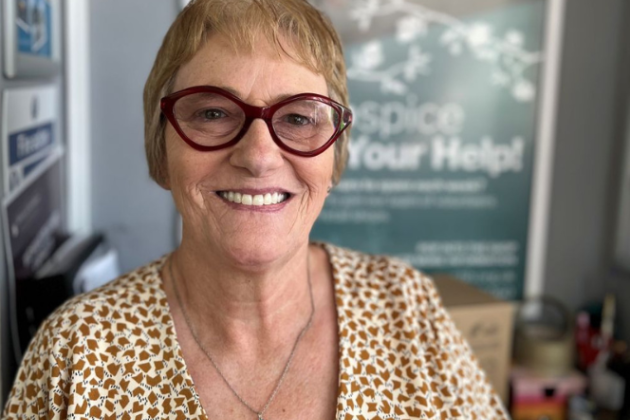
In many charities, there’s a familiar tension between Fundraising and Retail. Both generate income. Both engage communities. Yet too often, they operate in silos, each guarding their own budgets, targets and teams closer than their first-born child. At more than one Charity Retail Association regional hospice meeting recently, the same question kept surfacing:
“How do we stop working against each other and start working as one income generation team?”
It’s a question worth asking. And for many, the answer begins with leadership, culture, and a willingness to re-imagine how we define success.
The “poorer cousin” problem
Charlotte Greenwood, who was the Head of Retail & Marketing at Isabel Hospice before joining the Charity Retail Consultancy, describes Retail as often being treated as Fundraising’s “poorer cousin.” Many Directors of Income Generation come from fundraising backgrounds, and their job descriptions often reflect that bias - prioritising campaign management, donor stewardship, and philanthropy over retail experience.
Charlotte warns that this view is short sighted. It overlooks the killer combination of commercial acumen, values-led leadership and outcomes-focused drive that sit at the heart of every strong retail leader. At Isabel Hospice, she worked closely with her Head of Fundraising to take a “foot in the door” approach with corporate partners, using Retail as a gateway to wider engagement.
The challenge
With the cost of living crisis followed by rising minimum wage and national insurance costs, many organisations simply don’t have the cash to make generous donations anymore, leaving Fundraising teams in a difficult predicament.
“Enter Retail,” says Charlotte. “By asking for stock donations rather than cold hard cash, it becomes a much easier ask. Once you’ve established that foothold with a corporate partner, you can use storytelling about your charity’s mission to pull on the heartstrings and open the door to further support, whether that’s payroll giving, event challenges, or more traditional donations.”
Building one team, not two departments
Other charities have also had similar experiences. When Ross Henderson, Director of Income Generation & Digital at Nottinghamshire Hospice, took on his role in 2022, it came with a mission: unite Fundraising and Retail under a single leadership vision.
Ross describes three key principles that helped bridge the divide:
1. Income belongs to the organisation, not the individual
In many charities, income is “owned” by the department that generated it. Shop managers want to know if a pound donation goes into their budget, while Fundraisers want recognition for their own income streams such as corporate partnerships. Breaking that mindset is vital.
“The income is owned by the organisation, not by the individual income generator.”
That means celebrating shared wins. For example, Nottinghamshire Hospice’s Corporate Partnerships Manager nurtured a relationship with a corporate partner that led to stock donations for Retail which then generated £52,000 of income. On the flip side, their shops now ask customers to add a £1 donation at the till to directly support fundraising campaigns. Both sides benefit because both trust that the whole hospice wins.
2. Regular collaboration at every level
Many joint meetings between Fundraising and Retail happen at the top table. Ross says that:
“In most charities, Heads of Departments have monthly updates with polite discussions of what they’re currently doing, but only from their own department perspective.”
But that’s not how collaboration truly takes root.
Real integration happens when operational teams work together on shared projects, for example involving corporate volunteers in shop days, or inviting Fundraisers to Retail team meetings and vice versa so faces become familiar.
Ross explains:
“When shop staff now ask for a £1 donation, they’re not asking on behalf of the Fundraising team, they’re asking on behalf of Becky, the Community Fundraiser they met who brought good biscuits to the meeting.”
Relationships build understanding. Understanding builds trust. And trust builds income.
3. Equal footing and visibility
Giving Retail equal prominence in income generation discussions changes everything. Recognising retail’s strategic value, not just as a revenue stream but as a public facing brand engine, is the first step towards true integration. Ross implemented a rule early on that the Retail Operations Manager and Area Manager must attend all fundraising meetings. Even though 70 percent of the people in the room are fundraisers, Retail are given equal weight in the conversation in terms of both time and importance. The result? Shared language, shared priorities, shared success.
A united future for Income Generation
Ross and Charlotte’s experiences offer a powerful blueprint for what’s possible when barriers are broken down. Their approach moves the conversation from theory to practice, showing that collaboration isn’t just about meetings or shared slogans, but about embedding joint ownership and mutual respect into daily routines.
By redefining income as a collective success, encouraging visibility across departments, and ensuring equal footing at every level, Nottinghamshire and Isabel Hospice demonstrate how the culture shift from silos to synergy can actually happen.
It’s this mindset - that income generation is one team’s mission, not two departments’ competition - that underpins the future of successful charities. Because ultimately, the public doesn’t see two departments. They see one charity, one cause, and one brand.
For more ideas on how to help your Fundraising and Retail teams work better together, get in touch about our MBTI training and Internal Engagement course and discover practical ways to build stronger, more connected income generation teams.
📧 Email us: hello@thecharityretailconsultancy.co.uk
🌐 Visit: www.thecharityretailconsultancy.co.uk


